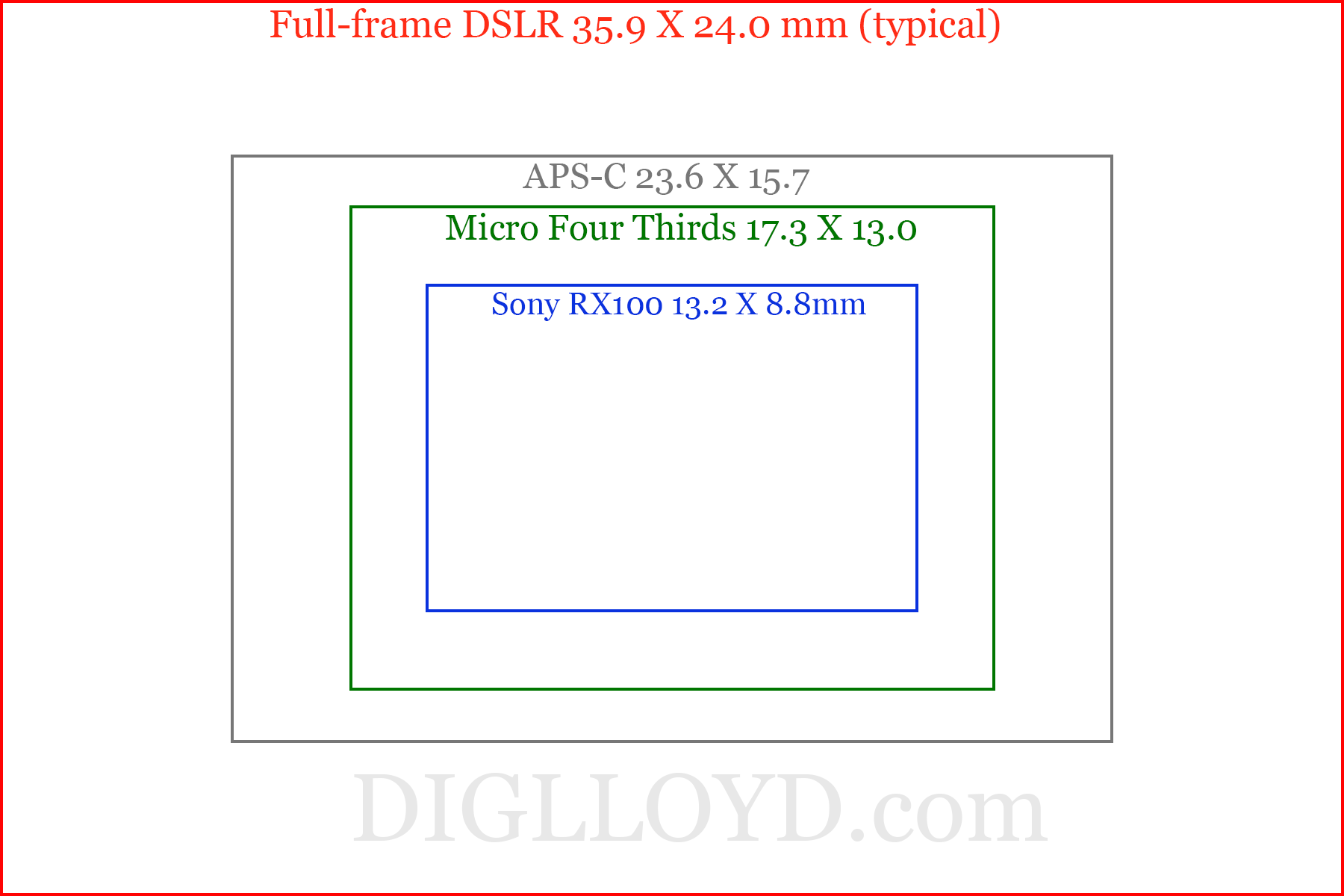Sensor Photosite Density on the Sony Cybershot DSC-RX100
I’m astonished by the quality I see coming out of the Sony Cybershot DSC-RX100. See my review of the Sony RX100.
This leads to some interesting suppositions about the resolution potential for other cameras / sensor sizes.
The Sony sensor and other sizes
The tiny 2.4 micron pixels of the Sony RX100 equate to a 148-megapixel DSLR, should the sensor be scaled to full frame.
A full-frame DSLR has a sensor of 35.9 X 24.0 mm, which is 2.72X larger linearly, or 7.4X larger in area.
DSLR resolution has a long way to go, and the resolution is not so much for resolution per se, but for the other image quality improvements it offers via higher sampling frequency, the elimination of digital artifacts, elimination of the anti-aliasing filter, etc.
Let’s have some fun and figure out just what resolution various cameras would have if their sensor sizes had the same density as the Sony RX100. By simple math:
- Full frame DSLR = 148 megapixels.
- APS-C = 63 megapixels.
- Micro Four Thirds = 34 megapixels
- Sony RX100 = 20 megapixels.
A DSLR with a 148-megapixel sensor could use that resolution to produce 83-megapixel by downsampling to 75% (linearly). The goal is not necessarily more resolution, but increased per-pixel image quality by oversampling.
Such an output file would offer very high per-pixel quality in terms of reducing per-pixel artifacts, as I show with the Nikon D800 vs Nikon D4. Judging by what I see with the noise behavior of the Sony RX100 sensor, the noise behavior would still be excellent, at least at ISO 125. Which would suit me just fine, as would a camera that offered an ultra-low ISO 25 or 50 design for landscape-style photography.
But what would it look like?
Let’s suppose that a 148-megapixel sensor were designed to output images at 75% (linear) resolution, producing 83-megapixel images via downsampling, which all but eliminates digital artifacts and reduces noise.
In my review of the Sony RX100, I show a simulation of a 148 megapixel sensor outputting 83 megapixel images, along with the red/green/blue color channels. The results are quite simply, amazing.
Remember, the Sony RX100 sensor exists in a real camera., and thus it should be possible to produce a version scaled to full-frame size using the same technology.
Predictions
I am going to go out on a limb here and suggest that Canon or Nikon might indeed be working on 100+ megapixel cameras already.
Canon might be irked at Nikon’s D800 success and thus have a strong incentive to deliver a 100+ megapixel camera within one year.
Nikon has already delivered the D800, so why not a Nikon D4 pro body with 60 or 90 megapixels?


























